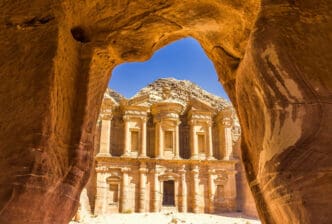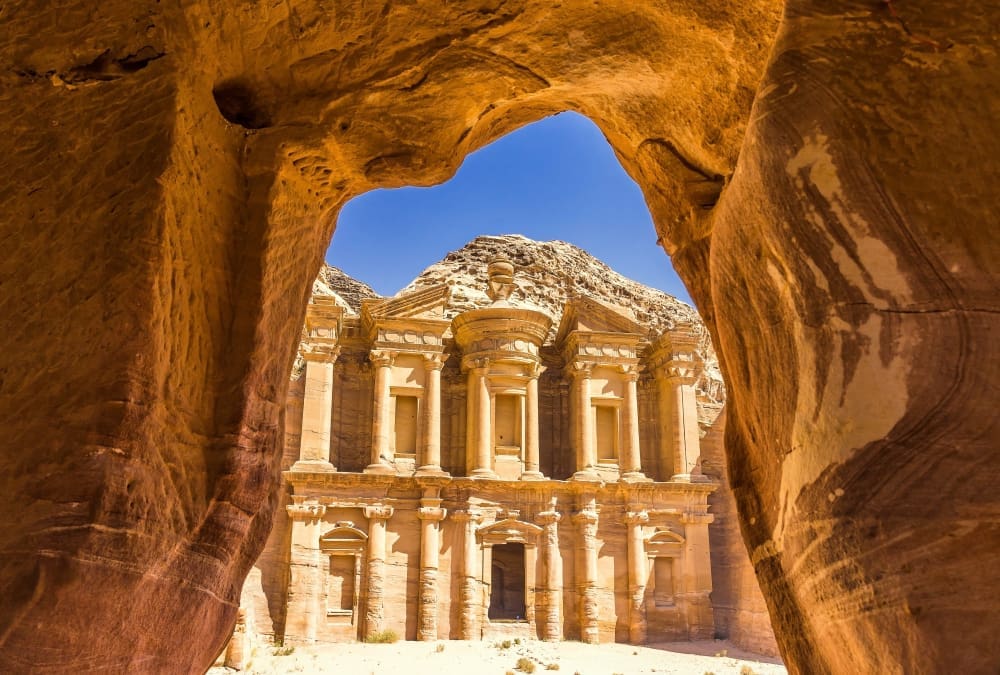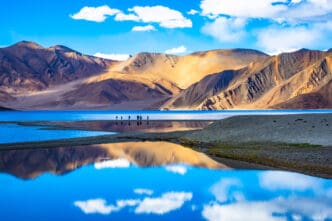KEY POINTS
- Petra is an ancient city in southern Jordan, carved directly into vibrant red sandstone cliffs by the Nabataeans over two millennia ago, and is a UNESCO World Heritage site and one of the New Seven Wonders of the World.
- The best time to visit the site is during the spring (March to May) and autumn (September to November) months, when temperatures are moderate for the extensive walking and hiking required to explore the sprawling complex.
- The journey through the narrow Siq canyon culminates in the iconic reveal of The Treasury (Al-Khazneh). For many, the ultimate experience is the strenuous hike up over 800 steps to the mountaintop Monastery (Ad-Deir), which rewards visitors with stunning panoramic views.
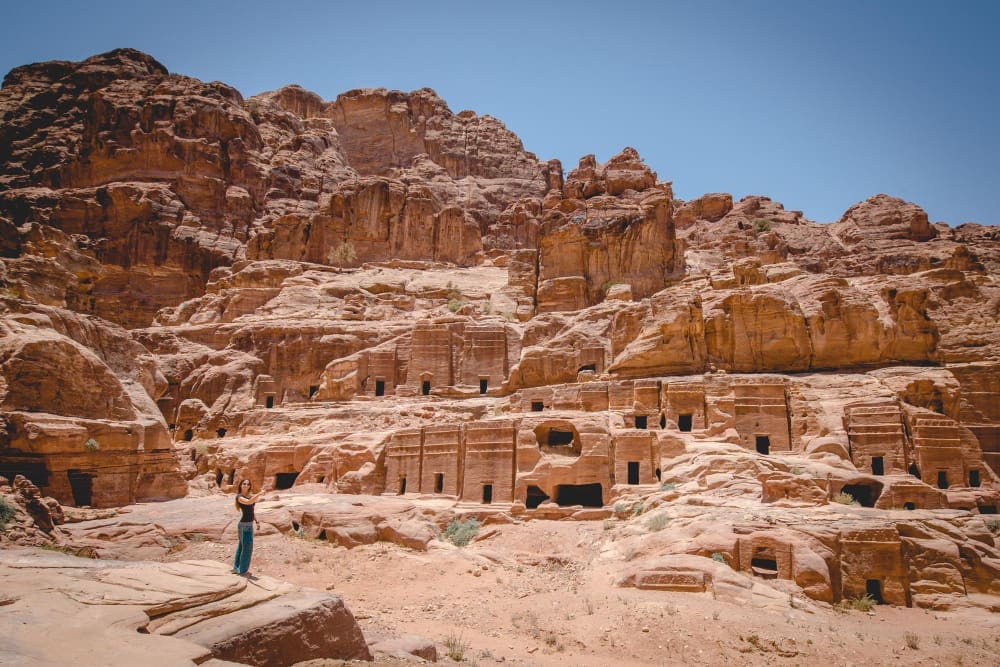
For travelers seeking a destination that seamlessly blends epic history, breathtaking landscapes, and sheer adventure, few places on Earth can rival Petra in southern Jordan. This ancient city, carved directly into vibrant red and pink sandstone cliffs by the Nabataeans over two millennia ago, is a sprawling archaeological marvel and a designated UNESCO World Heritage site. The best time to visit is during the temperate spring and autumn months, when visitors can comfortably explore the vast complex, from its iconic Treasury to the mountaintop Monastery, discovering why this “Rose City” continues to captivate the imaginations of all who walk its hallowed grounds.
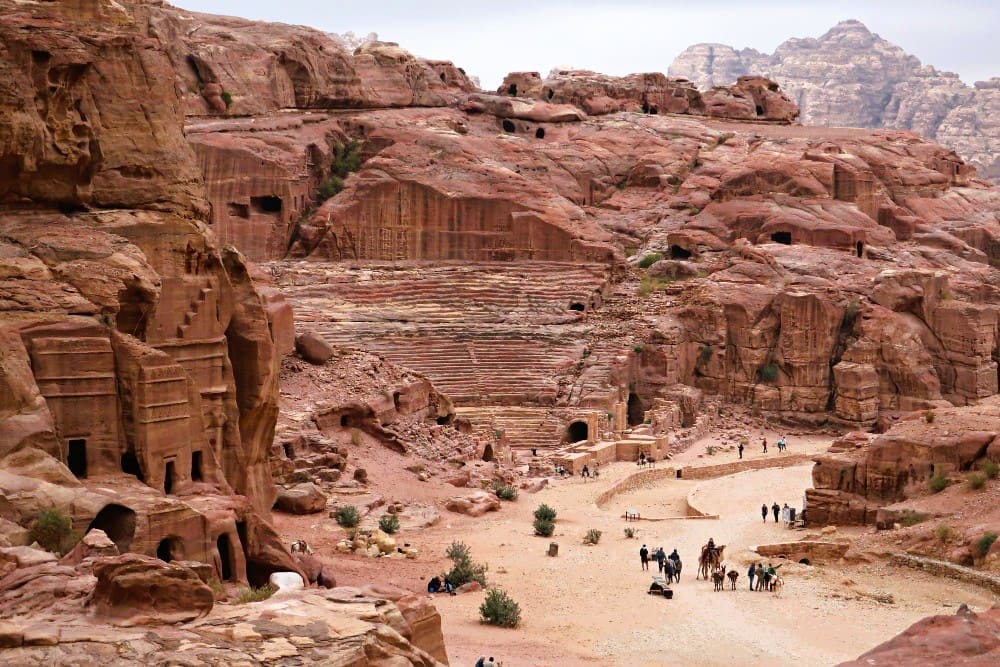
Understanding Petra: The Rose City
Petra’s story begins with the Nabataeans, a resourceful Arab tribe that settled in the region around the 4th century BCE. They mastered water engineering in the arid desert, allowing them to build a prosperous capital that became a crucial hub for trade routes linking Arabia, Egypt, and Syria-Phoenicia. It was their ingenuity that led to the city’s unique rock-cut architecture, where tombs, temples, and halls were hewn directly from the stone.
The city flourished for centuries, eventually being annexed by the Roman Empire in 106 CE, which added its own architectural flair, including a colonnaded street and a grand theater. After a catastrophic earthquake in 363 CE damaged its vital water systems and shifting trade routes diminished its importance, Petra was gradually abandoned and became lost to the Western world for centuries, inhabited only by local Bedouin tribes.
It wasn’t until 1812 that Swiss explorer Johann Ludwig Burckhardt, disguised as an Arab scholar, rediscovered the city, introducing its wonders to the world once more. Today, Petra is not only Jordan’s most valuable cultural asset but also one of the New Seven Wonders of the World, a testament to its enduring architectural and historical significance.
Planning Your Visit: Logistics and Essentials
A successful trip to a site as immense as Petra requires careful planning. From timing your visit to securing the right entry pass, getting the logistics right is the first step toward an unforgettable experience.
When to Go
The timing of your visit will significantly impact your experience. The most popular and pleasant seasons are spring (March to May) and autumn (September to November). During these months, daytime temperatures are moderate and ideal for the extensive walking and hiking required to see the site.
Summer (June to August) brings scorching heat, with temperatures often soaring above 35°C (95°F). While possible to visit, it requires starting at dawn and taking a long break during the midday peak, making it challenging to explore thoroughly. Winter (December to February) can be quite cold and may bring rain, but it also means far fewer crowds, offering a more solitary experience.
Getting There
Most international travelers arrive via Queen Alia International Airport (AMM) in Amman, Jordan’s capital. From Amman, Petra is approximately a three-hour drive south along the modern Desert Highway. Alternatively, some visitors fly into King Hussein International Airport (AQJ) in Aqaba, which is a shorter, roughly two-hour drive away.
Several transport options are available. Renting a car offers the most flexibility for exploring Jordan at your own pace. For a more budget-friendly option, the JETT bus company operates comfortable, air-conditioned coaches between Amman, Aqaba, and Petra. Private taxis are also readily available but are the most expensive choice.
Where to Stay
The town of Wadi Musa is the modern settlement that serves as the gateway to Petra, and it offers a wide range of accommodation. For ultimate convenience, several luxury and mid-range hotels, such as the Mövenpick Resort and the Petra Guest House, are located directly opposite the entrance to the archaeological site. This allows you to start your day early without needing additional transport.
Further up the hills of Wadi Musa, you will find numerous mid-range hotels and budget-friendly guesthouses and hostels. While they require a short taxi ride or a downhill walk to the visitor center, they often provide excellent value and stunning views over the valley.
Tickets and The Jordan Pass
For the vast majority of international visitors, purchasing the Jordan Pass before arrival is the most economical and efficient choice. This single package bundles the cost of your tourist entry visa into Jordan with prepaid access to over 40 attractions across the country, including Petra. It saves both time and money, eliminating the need to purchase separate tickets.
The Jordan Pass offers different tiers based on how many consecutive days you wish to spend in Petra (one, two, or three). A single day is widely considered insufficient to grasp the scale of the city. A two-day pass is ideal for most travelers, allowing you to cover the main trail on the first day and tackle a major hike, like the one to the Monastery, on the second.
Exploring the Ancient City: Key Sights and Trails
Petra is not a single monument but a massive city covering over 264 square kilometers (102 square miles). The main path is relatively flat and straightforward, but the most rewarding views often require strenuous uphill hikes.
The Main Trail: From the Visitor Center to the Treasury
Your journey begins at the Visitor Center and leads you down a wide path past the Djinn Blocks and the Obelisk Tomb. Soon, you will enter the Siq, a narrow, winding canyon over a kilometer long with towering rock walls that create a palpable sense of anticipation. This dramatic gorge, formed by tectonic forces and smoothed by water, serves as the grand entrance to the city.
After walking through the cool, shaded Siq, you emerge into the sunlight for one of travel’s most iconic reveals: The Treasury (Al-Khazneh). This masterfully carved, 40-meter-high facade is Petra’s most famous monument. Despite its name, which comes from a Bedouin legend about a pharaoh’s treasure hidden in the urn at its top, archaeologists believe it was the mausoleum of a Nabataean king. Its appearance in the film Indiana Jones and the Last Crusade immortalized it in popular culture.
Beyond the Treasury: The Street of Facades and the Theater
Moving past the Treasury, the valley opens up into the Street of Facades, a row of smaller but still impressive Nabataean tombs carved into the cliff face. A short walk further brings you to the enormous Theater. Originally built by the Nabataeans and later expanded by the Romans, it could seat over 8,000 spectators, a clear indicator of Petra’s size and importance.
The Colonnaded Street and the Great Temple
The heart of the ancient city’s civic life was the Colonnaded Street. This was once a bustling, paved thoroughfare lined with shops and public buildings during the Roman era. To the south of the street lies the sprawling complex of the Great Temple. This was not a temple in the traditional sense but likely a grand civic complex, featuring a small theater-like structure (an odeon) and impressive hexagonal pavement.
The Monastery (Ad-Deir): The Ultimate Hike
For many, the hike to The Monastery (Ad-Deir) is the highlight of their visit. This trail involves climbing over 800 steps carved into the rock, a journey that takes about 45-60 minutes. The effort is rewarded with the sight of a monument even larger and more imposing than the Treasury, set against a dramatic mountain backdrop.
The Monastery’s remote location and the stunning panoramic views from nearby viewpoints over the Wadi Araba desert make it an unmissable part of the Petra experience. A small café opposite the facade offers a welcome spot to rest and absorb the magnificent view.
Practical Tips for a Better Petra Experience
A little preparation goes a long way in making your visit to this vast site enjoyable and safe.
What to Wear and Pack
Sturdy, comfortable walking shoes are the single most important item you can bring. You will be walking for hours on uneven, sandy, and rocky terrain. Dress in lightweight, breathable layers, as temperatures can fluctuate. A wide-brimmed hat, sunglasses, and high-SPF sunscreen are essential to protect against the powerful sun.
Staying Hydrated and Energized
Carry at least 1.5 liters of water per person, especially if hiking in warmer weather. While there are stalls and restaurants within the site, they are infrequent and more expensive than shops in Wadi Musa. Packing your own snacks is a good way to keep your energy levels up throughout the day.
Navigating the Site and Animal Welfare
Pace yourself. Do not try to see everything in one day. Hiring a licensed guide at the Visitor Center for a few hours can provide invaluable historical context that brings the ruins to life. Be mindful of the animal welfare issue regarding the horses, donkeys, and camels offered for rides. If you choose to use one, ensure the animal appears healthy and well-cared-for. Many visitors prefer to explore on foot to avoid contributing to potential animal mistreatment.
Experiencing Petra by Night
Held on select evenings, the Petra by Night tour allows you to walk the Siq illuminated by over 1,500 candles, culminating in a view of the candlelit Treasury. It is an atmospheric and quiet experience, focused on ambiance rather than detailed sightseeing. While some find it magical, others may find it doesn’t meet their expectations; it is best viewed as a supplement to, not a replacement for, a daytime visit.
A visit to Petra is more than just a tour of an ancient ruin; it is a journey into a lost civilization. The sheer scale, intricate detail, and dramatic setting of the city leave an indelible mark on all who pass through the Siq. By planning ahead, pacing yourself, and allowing at least two days to explore, you can fully appreciate the ambition and artistry of the Nabataeans and understand why their legacy, carved in stone, has endured for millennia.

